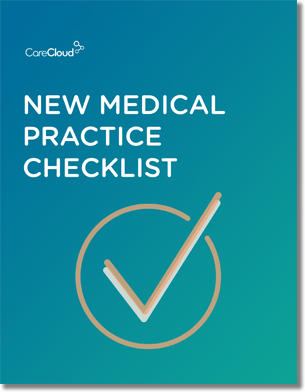Just as a cardiac specialist needs a team to conduct open-heart surgery, trying to tackle an EHR implementation alone is not the way to go. Integrating a new EHR into your practice’s workflow has to be a group effort involving physicians, nurses, and staff members.
This week, we continue our five-part series on CareCloud’s ROI of EHR whitepaper by addressing the best practices to follow for a successful EHR transition.
Implementation Champions
It is not unusual for one champion in a practice to assume responsibility for the entire EHR effort. This may enable a fast start – gaining alignment and enlisting other resources up-front is time-consuming – but makes productive EHR adoption more difficult when the time comes to actually introduce the technology.
Therefore, the first step is to build an EHR implementation team within the organization after properly mapping out workflows and processes. The National Learning Consortium (NLC) advises that practices choose three or more members from varying backgrounds and departments as they set goals for the EHR implementation. This will allow for a multitude of perspectives on how the new EHR will be used.
Once a practice selects a team, it can more easily focus on the task at hand by separating implementation into three phases: preparation and planning, reassuring staff, and driving change at an organization.
Preparation and Planning
A practice’s EHR implementation team should be actively involved in pursuing a first-time or replacement EHR, asking vendors the right questions and considering workflow bottlenecks. The team should then engage the rest of the practice’s staff, creating a glossary of EHR terms so they won’t go into panic mode once acronyms like CPOE and HIE are brought to the forefront.
Physicians should create goals with the EHR implementation team, then distribute them to the rest of the staff, so they can become better acquainted and personally invested in the practice’s overall mission. Using the ONC’s S.M.A.R.T. goal model makes it easy to separate goals into Specific, Measurable, Achievable, Relevant, and Time-bound checkpoints.
Reassuring Staff
It is also important to make the EHR implementation team as well as current and future staff members feel reassured by explaining that extra hours and an ongoing commitment to the EHR beyond implementation will make their jobs easier in the long run. This can be done by evangelizing the benefits of a paperless practice and streamlined workflows – after all, a smarter staff means more efficient work, which helps practices see a quicker return.
Furthermore, as practices transition to organizing EHR efforts, physicians and office managers may realize the practice needs additional team members with a high level of expertise in one area (e.g., a computer-savvy EHR builder that can work with the system to create templates and customize drop-down boxes).
It is important to remind both the team and practice staff that EHR implementation is a team effort and that no one will be replaced for the temporary consultative help. The stress brought about by a lack of job security decreases the productivity of the practice’s employees, who are really the backbone of the EHR implementation process.
Driving Change
Finally, it is important to evaluate what processes a medical practice should continue and/or stop to facilitate the goals of its EHR transition and what processes physicians and office managers should put in place to recreate the practice’s vision. Organizations should ensure staff members are comfortable and accepting of consistent change, particularly during the first three months after implementation.
Having already chosen the right product, practices will have an easier time becoming more agile, with the ability to respond to both internal and external challenges on the fly.
However, building a culture around speed, patient care, and coordination – that underlies the key benefits of an EHR – will give practices a sustainable advantage as they adapt to changes in the clinical and regulatory climate around them.

Do you know what you need when setting up a new medical practice?



